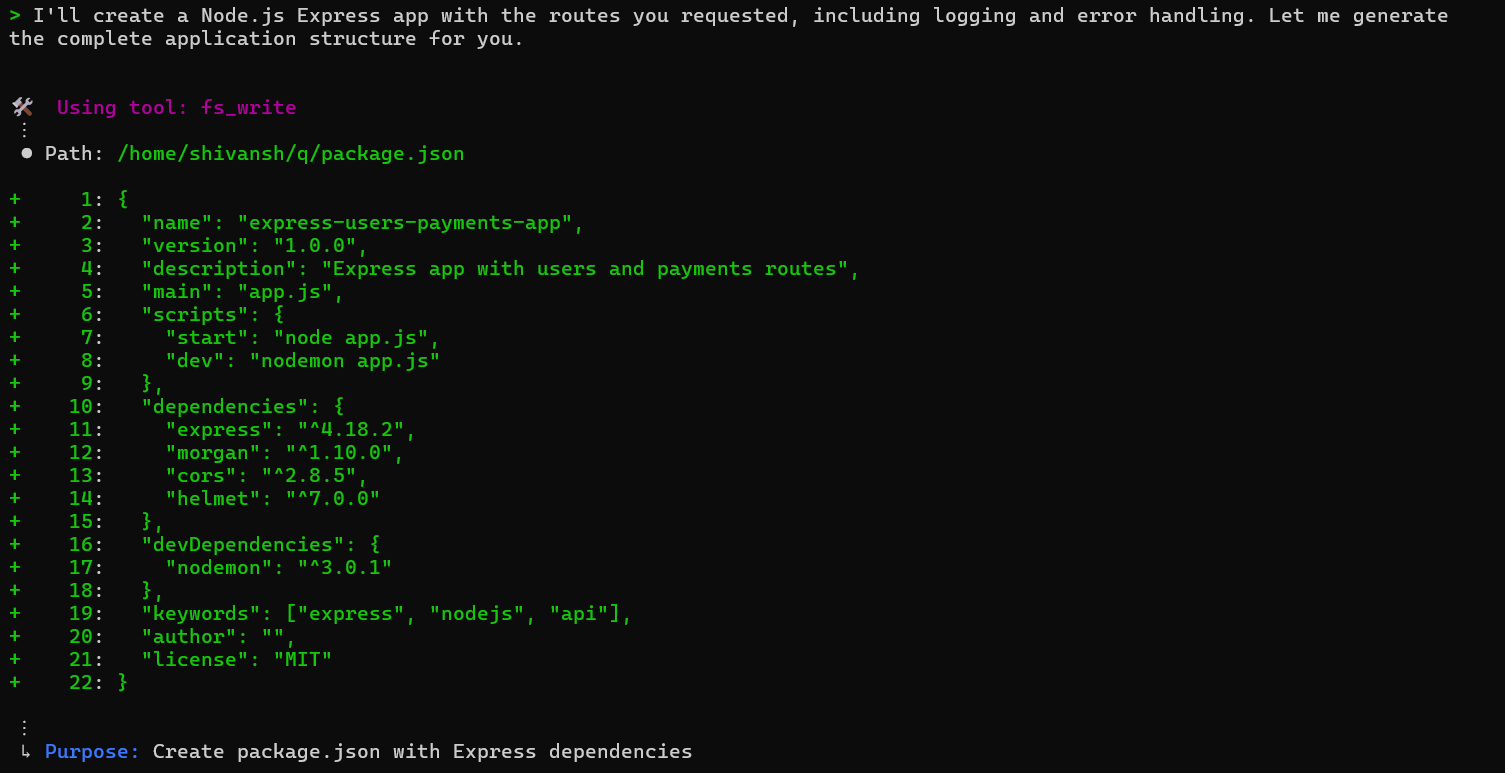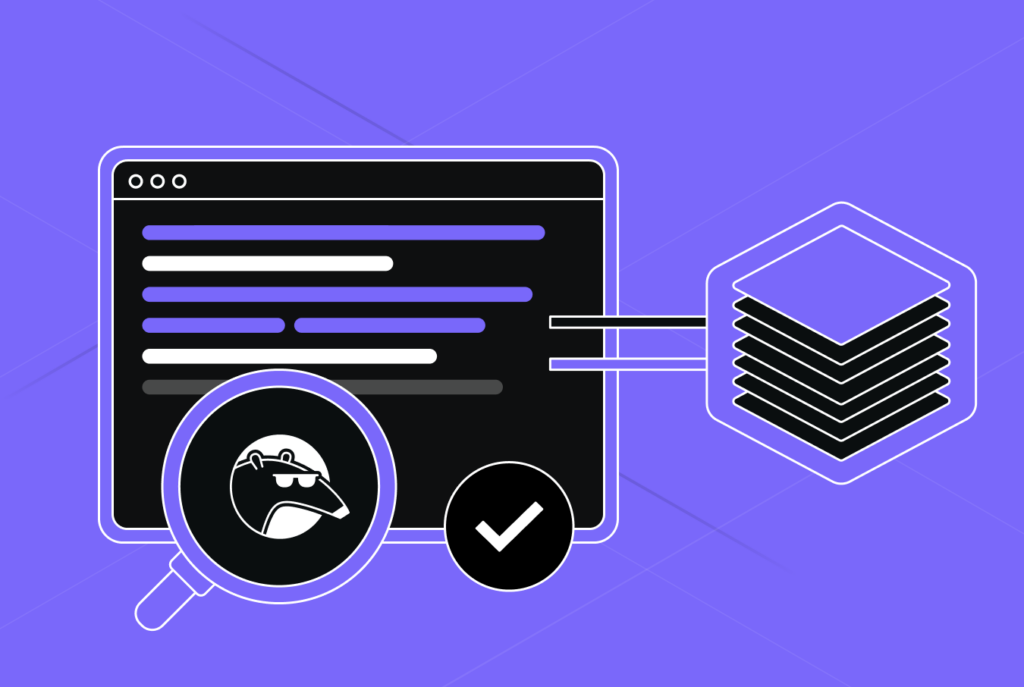Claude Code Alternatives: 3 CLI Tools That Won’t Burn Your API Credits


TL;DR
- Claude Code is great for quick, cloud-based coding tasks but lacks automation, repeatability, and integration with local dev tools or CI/CD pipelines.
- Qodo Command is ideal for enterprise CI/CD environments, supporting reusable agents, model flexibility (Claude, GPT-4, local models), and tight terminal integration for tasks like PR review and changelog generation.
- Goose CLI offers full local control with offline support, making it perfect for secure or air-gapped environments, supporting persistent sessions and local model execution.
- Amazon Q CLI is designed for AWS-centric workflows, offering AI-powered help within the terminal, tightly integrated with AWS tools like Git, Docker, and Kubernetes.
- Choice depends on needs: Qodo for enterprise workflows and CI/CD, Goose for full local control, and Amazon Q for AWS-native environments.
On Reddit, a developer recently asked:

This isn’t just a one-off; there’s a pattern: developers want open‑source terminal‑based helpers for coding, not cloud‑based, metered services like Claude Code or Codex. Those tools work, but they rely on API credits. Claude Code is well-suited for interactive, on-demand tasks. For teams with frequent, iterative workflows like PR reviews, debugging, or CI integration, tools that support local execution or reusable agent configurations may offer additional flexibility depending on the use cases.
What people really need are CLI tools that run locally or with flexible models, can hold state in agent configs, and don’t rack up a cost per query. You want tools that live where your code does: in the terminal, running in your environment, notified through hooks, not locked behind an API.
So here’s a breakdown of three standout CLI tools that meet those needs, offering local-first usage, open‑source freedom, and workflows built around the terminal:
- Qodo Command: automation-friendly, multi‑model, CI/CD ready
- Goose CLI: open‑source, local LLM execution, session‑based
- Amazon Q CLI: AWS‑native UX, good for teams on AWS
When to Look for a Claude Code Alternative
Claude Code is a capable AI coding assistant helping generate code, explain logic, and prototype functions, especially in a browser or terminal. For individual developers exploring or experimenting, it serves that purpose well.
In some environments or team workflows, you may find value in using other tools alongside Claude Code, especially when:
- Multiple model backends are part of your workflow: Claude Code is optimized for the Claude model family. If your team needs to use other models, like GPT-4, Gemini, or open-source LLMs, for reasons such as cost optimization, latency, or compliance, a multi-model toolchain may offer more flexibility.
- Integrated code validation is important: Claude helps generate and explain code, but it doesn’t include built-in capabilities for things like test coverage checks, static analysis, or policy enforcement. If your process includes automated validation steps, complementary tools can help enforce consistency and correctness.
- Cost structure and usage access are key factors: Claude Code is a paid offering with no permanent free tier. For some teams, especially those experimenting or automating high-frequency tasks, tools with open-source or freemium options may help support broader access and iterative use at scale.
In these cases, turning to alternatives to Claude Code is a logical step. Developers in 2025 are increasingly evaluating tools that offer better integration, local execution, and long-term cost savings, leading to a surge in interest in Claude Code alternatives in 2025. Tools like Qodo Command, Goose CLI, and Amazon Q CLI are purpose-built for these use cases, with more control, extensibility, and SDLC integration.
Quick Comparison of Claude Code Alternatives in 2025
If you’re deciding whether to stick with Claude Code or switch to a CLI tool, here’s a side-by-side breakdown that highlights what each tool is designed for and where it fits best.
| Feature | Claude Code | Qodo Command | Goose CLI | Amazon Q CLI |
| Pricing Model | Pro: $17/month (annual) or $20/month (monthly)) | Free open source CLI, Full platform: $45/user/month | Depends on LLM used (Claude, GPT, etc.) | Pro Tier: $19/user/month (AWS account required) |
| Local Execution | No (cloud-only) | Runs locally, optional web UI | Fully local | Partial (some commands local, others cloud via AWS) |
| Custom Agents | Supports subagents for task-specific workflows. | Create and run custom agents with configurable commands. | Create and run custom agents with configurable commands. | Configure agents with preset tools, context, and permissions for workflows. |
| Model Flexibility | Claude-only (Sonnet, Opus, Haiku across Anthropic API, AWS Bedrock, GCP Vertex) | Claude, GPT-4.1/o, Gemini 2.5, Grok (selectable via config) | Supports Claude, GPT, Gemini, LLaMA, Mistral, and more via 20+ backends (local + cloud) | Choose Claude Sonnet 4/3.7/3.5 with q chat –model; Bedrock-powered |
| Ideal For | Quick one-off tasks | Automation, CI workflows, internal dev agents | Offline automation, dev sandboxing | AWS-native devs and infrastructure teams |
Qodo Command

Qodo Command is a terminal-first interface for managing AI agents. It’s designed for developers who want to automate code-related tasks, like PR reviews, test audits, changelog generation, and code cleanup, without relying on browser tools or cloud-only setups.
Each agent is a reusable, configurable unit that defines a clear goal, model, and tool access. Qodo supports Claude, GPT‑4, Mistral, and local LLMs, and agents can be triggered via CLI, webhook, or UI. You can integrate them into CI/CD pipelines or serve them as local APIs.
Key Commands
- qodo chat: Start an interactive terminal chat with your chosen model
- –model=<model_name>: Run tasks using Claude, GPT‑4, Mistral, or other supported models
- –ui: Launch the web-based Qodo interface for interactive sessions
- –webhook: Expose any agent as a local HTTP endpoint
- –mcp: Enable Multi-Context Processing (MCP): gives agents access to tools like git, ripgrep, shell, and filesystem
Installation
Requires Node.js and npm.
npm install -g @qodo/command qodo login
This sets up a local API key in ~/.qodo, which can also be used in CI or containers.
Manage keys with:
qodo key list qodo key create <name> qodo key revoke <name>
Defining and Running Agents
Agents live in your project directory. Each agent defines:
- Natural language task (e.g. “Summarize test failures”)
- Optional parameters and tool access
- Model selection and execution context
qodo <agent-name> --model=claude-3-sonnet --tools=git,fs
Example invocations:
qodo pr-review --path=src/ qodo fix-logs --tools=shell,fs qodo summarize-tests --webhook --port=8080
Common Use Cases
- PR Review: Analyze diffs for test gaps, complexity, or style violations
- Test Debugging: Investigate flaky or failing tests with context
- Automation: Integrate into CI, Git hooks, or cron to trigger AI tasks
- Docs & Changelogs: Auto-generate changelog entries or update documentation
Hands-On Examples
Session: Infrastructure-as-Code with Web UI
Command Run: qodo –ui
Prompt in Browser Chat: “Write Terraform to deploy a Lambda function triggered by S3 uploads, written in Python.”
Here’s qodo started creating .tf files:

What Qodo Command Did:
- Created a complete IAC config in Terraform.
- Wrote a working Python Lambda function:
- Generated modular files:
- main.tf, variables.tf, outputs.tf
- lambda_function.py, README.md, and supporting resources
- Set up:
- IAM roles and security policies
- S3 bucket with object-created event notifications
- CloudWatch log group for Lambda monitoring
- Produced step-by-step test instructions and a cleanup guide. You could terraform apply and immediately test the S3-to-Lambda pipeline.
Pros
- Fully configurable, reusable agents
- CLI-first, with optional browser UI
- Supports Claude, GPT‑4, Mistral, and local models
- Works in CI with stored API keys
- Tools like git, shell, and filesystem are accessible via MCP.
- Agents can run locally or be served as web endpoints
Cons
- Requires Node.js and npm
- No native air-gapped/on-premise support
- No agent scaffolding (qodo init not available yet)
Pricing
Free for individual developers; $19/user/month for team plans
Goose CLI

Goose CLI is a fully local, open-source AI assistant built for developers who prefer terminal workflows. It operates entirely on your machine, with no cloud dependencies, making it ideal for offline coding, automation, and debugging. Goose uses persistent sessions with memory, enabling natural, iterative development conversations over time.
It integrates with system tools like Python, Git, and shell commands through modular “MCP” extensions. You can use it in the terminal or launch a local web UI for interactive sessions.
Key Features
- goose session start / goose session resume , Start or continue memory-persistent CLI sessions
- goose web –open, Launch local web UI mirroring terminal prompts
- Session context is preserved between commands
- MCP extensions: Browser automation, file system access, Git, shell, etc.
- Supports local or remote LLMs: OpenAI, Claude, Gemini, or Ollama-compatible backends
- Runs fully offline after setup with a local model
Installation
Quick install via shell:
curl -fsSL https://github.com/block/goose/releases/download/stable/download_cli.sh | bash
On macOS (via Homebrew):
brew install block-goose-cli
Initial setup:
goose configure
You’ll select a model provider (e.g., OpenAI, Anthropic, or local) and optionally install MCP extensions like Git or browser control.
Use Cases
- Offline dev workflows: Bugfixes, code reviews, and file edits without API usage
- Interactive coding: Debug, refactor, or build small apps in-session
- Tool automation: Launch files, control browser, or manage repos via MCP extensions
- Prototyping: Generate project scaffolds or helper scripts on demand
Hands-On Examples:
Start a session: FastAPI + MySQL App Generation
goose session start
Prompted Task: “Create a FastAPI app with an endpoint for deposit and withdrawal and with account balances stored in MySQL, keyed by ID.”

What it did:
- Broke the task into clear steps:
- Scaffold a FastAPI app
- Add endpoints for deposits/withdrawals
- Integrate SQLAlchemy with MySQL
- Installed required packages: fastapi, uvicorn, sqlalchemy, pymysql
- Created a project directory:
- Wrote code scaffolding logic directly in-session
You get a working FastAPI project with database connectivity initialized locally—no cloud steps required.
Pros
- Fully local execution (no API usage with local models)
- Persistent context with session memory
- Supports Git, shell, browser, and file operations via extensions
- Works offline after initial setup
Cons
- Requires initial model setup (API or Ollama/local)
- Manual extension installation
- No native CI/webhook integration (workarounds possible via scripting)
Pricing
Free to use.
Amazon Q CLI: Terminal AI built for AWS-native workflows

Amazon Q CLI is a local-first AI assistant for developers who work deep in the AWS stack. It runs in your terminal, understands your context, and helps you manage infrastructure, debug, scaffold, and automate, all through natural language.
Under the hood, Q CLI runs locally but uses Amazon Bedrock for AI-powered completions. It integrates directly with AWS CLI and local tools like Git, Docker, and Kubernetes.
Key features built for real dev workflows
- q chat – Start or resume an interactive AI terminal session
- q translate – Convert natural language to shell commands (review + run)
- Autocomplete & inline hints – Works across git, AWS, npm, Docker, kubectl, and more
- /editor – Full-screen prompt editor (nano, vi, code) for composing/debugging multi-step tasks
- Agentic execution – Q can run commands under your confirmation
- Session memory – Maintains multi-turn state across CLI conversations
Installation (macOS & Linux)
macOS:
brew install amazon-q # Or use the DMG installer from AWS site
Linux (Ubuntu/Debian):
# Use .deb or AppImage # Headless install supported
Post-install:
q login # AWS Builder ID or IAM Identity Center q doctor # Check installation health q version # Verify CLI version
Where it fits in your workflow
- Natural language → AWS operations
q translate "Create an S3 bucket named logs-bucket"
- Project scaffolding with git integration
q chat → "Scaffold a Vite React app and commit it to Git"
- Command-line productivity boosts
- Inline suggestions when typing: aws s3
- Dropdowns with available options
- Context-aware completions
- Complex workflows via /editor
- Draft prompts, reference files, and debug flows in a full-screen editor
Hands-on example:
Command Run: q chat > “Generate a Node.js Express app with routes for /users and /payments, with logging and basic error handling”
Here’s what it repsoned:

What it did:
- Automatically scaffolded an Express app with full routing, logging, and security middleware
- Created:
- app.js: Central app with routes /users, /payments, and /health
- /routes/users.js & /routes/payments.js
- package.json: With dependencies like express, morgan, helmet
- Included a 404 handler and global error middleware
- All operations were locally confirmed before write
Pros
- Converts natural language into a shell command
- Executes commands safely with confirmation
- Autocomplete across AWS CLI + dev tools
- Session memory across terminal interactions
- Strong integration with AWS-native tooling
Cons
- Requires AWS login (Builder ID or IAM Identity Center)
- No Windows support yet
- Not ideal for fully offline or air-gapped setups
- AWS-focused, less relevant outside the AWS ecosystem
Pricing
Free for individuals; $19/user/month for Pro features
Qodo Command in Enterprise Engineering Workflows
In enterprise software development, automation tools must be secure, reproducible, and compatible with existing infrastructure. Teams responsible for developer experience often need to enforce standards across multiple services while supporting flexible workflows. These requirements include version control, auditability, model flexibility, and the ability to integrate into CI/CD systems without introducing new security risks.
Qodo Command is designed to support such needs by allowing developers to define task-specific agents as YAML files. These agents can be versioned alongside application code and triggered from the command line or within automated pipelines. For example, teams can configure an agent to review pull requests and run it consistently across projects using a simple command like:
qodo pr-review --path=src/
Agents have access to real project context using Qodo’s Multi-Context Processing (–mcp) feature. This provides read access to Git diffs, shell output, and filesystem content, enabling the agent to operate based on the actual state of the codebase. This can improve the relevance and precision of generated output during tasks such as changelog generation or test result summarization.
Security in Qodo is managed at the CLI level. API keys are generated and scoped via terminal commands and stored in environment variables or CI secrets. There is no reliance on browser-based sessions or external UI authentication, which aligns with common enterprise practices for managing secrets and automation permissions. All agent executions produce traceable outputs, including logs, diffs, and inline suggestions. These can be stored with build artifacts or sent to monitoring systems, supporting audit and compliance needs. Qodo also supports multiple language models. Teams can switch between models, including cloud-based or locally hosted, by passing the –model parameter at runtime. This makes it possible to adjust based on cost, performance, or privacy considerations without altering the agent’s logic.
Conclusion
Claude Code works well for fast, cloud-based coding tasks, but it falls short when the job demands automation, repeatability, or integration with local dev tools and CI pipelines. For real engineering workflows, you need tools that behave like infrastructure, not just chat interfaces.
- Qodo Commands is purpose-built for CI/CD environments. Its agent-based model, model switching, and tight terminal integration make it ideal for test validation, PR review, changelog generation, and more, all from the command line or pipeline.
- Goose CLI is best when you need full local control. It’s lightweight, extensible, and offline-ready, which makes it a strong choice for secure or air-gapped environments.
- Amazon Q CLI fits best if you’re already working inside the AWS ecosystem and want AI-powered help without leaving your terminal.
Each tool serves a different need. Suppose you’re working across services, owning infrastructure, or supporting multiple dev environments. In that case, a well-integrated CLI can help your team move faster, catch issues earlier, and reduce human toil, without running up cloud costs or introducing new failure modes.
Whether you’re looking for Claude Code alternatives 2025 for CI/CD pipelines or need alternatives to Claude Code that support local execution and team collaboration, these tools offer better extensibility and control. Pick based on where your work happens and how your team ships, not just which model sounds smartest. That’s what makes these tools actually useful at scale.
FAQs
What is the best Claude Code alternative for enterprise use?
If you need CI integration, reusable agents, model flexibility, and secure context-aware automation, Qodo Command is the strongest option. It supports Claude, GPT-4, and local models, and is designed to run within real workflows, not just as a chat interface.
Can I use Claude Code for enterprise codebases?
You can, but expect limits. Claude Code is cloud-only, usage-based, and lacks agent reusability. It’s better suited for individual tasks than large-scale team automation or CI/CD environments.
What is Claude Code best for, and what is it not?
Claude Code works well for small, ad hoc tasks, refactoring a function, understanding a snippet, or asking coding questions. It’s less effective for automated workflows, large diffs, or repeatable team-wide processes.
Is Claude Code secure and SOC 2 compliant?
Yes, Claude runs on Anthropic’s infrastructure, which follows standard cloud security practices and offers SOC 2 compliance. That said, if you’re working in regulated or air-gapped environments, local-first tools like Goose CLI or model-isolated setups with Qodo might be a better fit.






